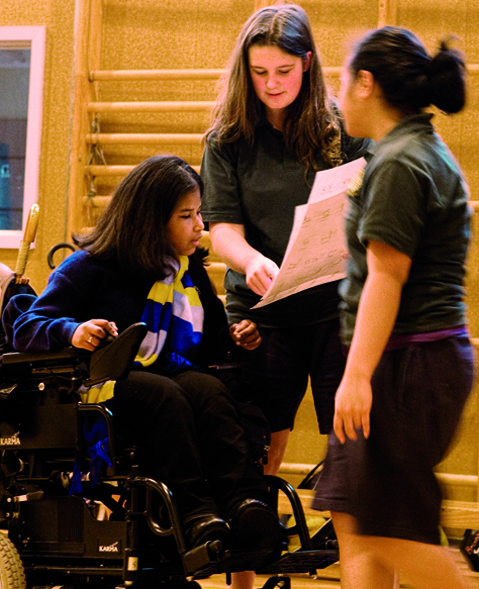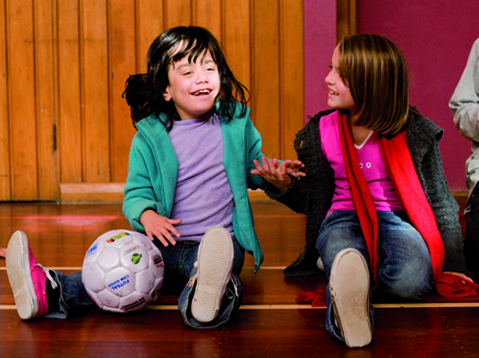Presence; participation
Presence
At its most basic, students’ presence means being at school. But inclusion involves far more than that.
For schools, presence requires preparation and a whole-school commitment to welcoming all students in the community. Charters, policies, and processes for enrolment and support need to be robust and inclusive enough to provide learning opportunities for all students, whatever their needs.
Relationships are the key to successful transition to school for all students and their families. We have strong relationships with the early childhood providers in our area, so we know about any children who will require more than the usual support through transition. We attend Individual Development Plan meetings before school entry, and work hard to find the right pace of change for the child, the family, and the teacher. As we prepare the class rolls each year, we work around children we know will require extra support, finding the “best fit” teacher and classmates. This move to school is too important to get it wrong: we need to get it right from the start.
Principal, Karori West Normal School
Guiding questions - He pātai
- What policies does your school have for including students with special needs?
- How often are the policies monitored and reported on?
For Raurimu Avenue School, inclusion is about being one of us. It’s all there – in the curriculum, the NAGs, the special education policy. Inclusion isn’t a puzzle, it’s what makes us complete. Our school is predominantly Māori, and it’s the same message: we need best practice for all our students.
As principal, my role is to lead and model. I use additional teaching time myself so I can work closely with the teachers and the students. We’re in constant conversation through the day. I’m very excited about inclusion – the richness it brings to the school far outweighs the cost. When you ask what is important, I say: “He tangata, he tangata, he tangata.”
Principal, Raurimu Avenue Primary School
Participation
Participation means belonging – the active involvement of a student with special needs as a valued member of the academic, physical, social, and cultural life of the school. Supporting the participation of all students is a whole-school responsibility, much like the concept that “it takes a village to raise a child”. A “one teacher aide–one child bubble”, for example, is not participation.
Successful participation requires strong leadership, based on an understanding of the vision and principles laid down in The New Zealand Curriculum, the legal and regulatory requirements on inclusion that apply to all schools, and the attitudes and actions that lead to any student – and their family or whānau – knowing that they belong.
The connections and partnerships between school and home are essential and can make or break inclusive practice. Schools that have built successful partnerships with groups such as whānau and the wider Māori and Pasifika communities can build on this experience to fully include students with special needs.
Guiding questions - He pātai
- What systems, initiatives, and programmes in your school are most effective in supporting the participation of students with special needs?
- How do you encourage teachers to work collaboratively with families and whānau?
A parent’s story
When my son started school, I was ready to explain the interventions and strategies that had been successful in kindergarten, but the teacher assured me she didn’t need my help. Within two weeks, my five-year-old son had been stood down, and things just went downhill from there.
In almost two years, he was rarely allowed to attend beyond 10 am, despite having a full-time expert teacher aide who worked well with him. He was frequently stood down and finally suspended. When I reluctantly admitted defeat and enrolled my son in a different school, my involvement was welcomed and the staff were open to learning the strategies we used. He’s never looked back, and I am a part of the collaborative, active team that supports his learning.


